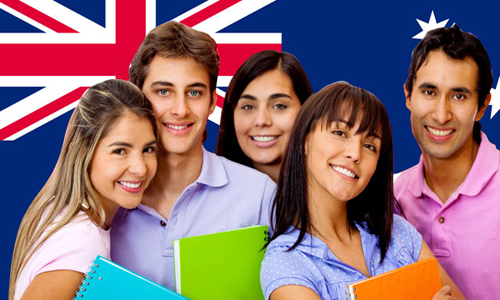Australia once again has set a new milestone with a total enrolment of 624,000 foreign students in 2017. This shows a 13% increase over the last year, as per the Australian Department of Education and Training, and compares to average growth of roughly 4.55 per year over the past decade.
Around 200 nationalities are represented in Australia’s international student population. From total, more than half 53% of all overseas students come from five countries in the country that are China 30%, India 11%, Nepal 5%, Malaysia 4%, and Brazil 4%.
When it comes to the higher education sector, it enrolls the lion’s share of overseas students 44% with350, 470 students. This was increased with 15% in the year 2016. Talking about VET sector it has been seen as a robust growth with 27% which is around 217,700 foreign students. The English-language sector enrolled 19% of all international students 155,450 which grew by only 35 all over 2016
In the meantime, the secondary sector accounted for 3% of students and non-awarded programs such as exchange and foundation programs claimed 6%.
The flow of overseas students in numbers in the last various years have been raised, but in some sectors and institutions have attracted an uneven share of the growth. Group of Eight institutions in Victoria and New South Wales
For example, four of the Group of Eight institutions in Victoria and New South Wales (Monash University, University of Melbourne, University of Sydney, and University of New South Wales) have increased their market share up to 22% between 2010 and 2016. On the other side, growth in postgraduate enrolments in the same period of time has been increased with6% per year on an average. However, undergraduate enrolments 1%– a sharp reversal of the picture in 2010, when the number of overseas students in Australia was doubled those studying at the postgraduate level.
3 out of 10 international students are Chinese in Australia. China is contributing 40% of year-over-year growth from 2016-2017 solely. The Internationals Education Association of Australia observes that the confidence for Australia globally has increased up to 41% of onshore year-to-date commencements from 2014 to 2017.
According to Phil Honeywood, chief executive of IEAA, The current student visa policy framework “SSVF” could be playing a vital part in preventing education providers from entering into new markets.
China and India is the only country which will be remained at the top in sending students in Australia by 2020. However, it estimates a different mix of leading senders otherwise with, Philippines, Pakistan, and Indonesia rounding out the top five, Bangladesh has set its position at the 10th rank for the first time.
Australia’s English Language sector ELICOS posted reticent overall growth with 3% relative to the other education sectors. And, in the last half of 2017, noticed actual declines for the first time in the last ten years.
The fortunes of ElICOS have been shown to have a knock-on effect on the nation’s higher education and VET sectors and assumed expect that lower ELICOS commencement in the final months of 2017 will, in turn, impact higher education and VET commencements in 2018
The number of international students is restored and the country’s higher education providers are showing confidence in the current situation and path going forward. A huge number of International students are opting to come to Australia for having a world-class higher education, lifestyle and our safe welcoming communities, said Universities Australia’s Chief Executive Belinda, Robinson

